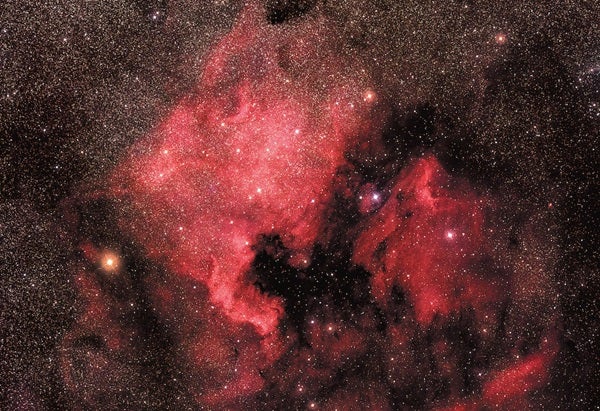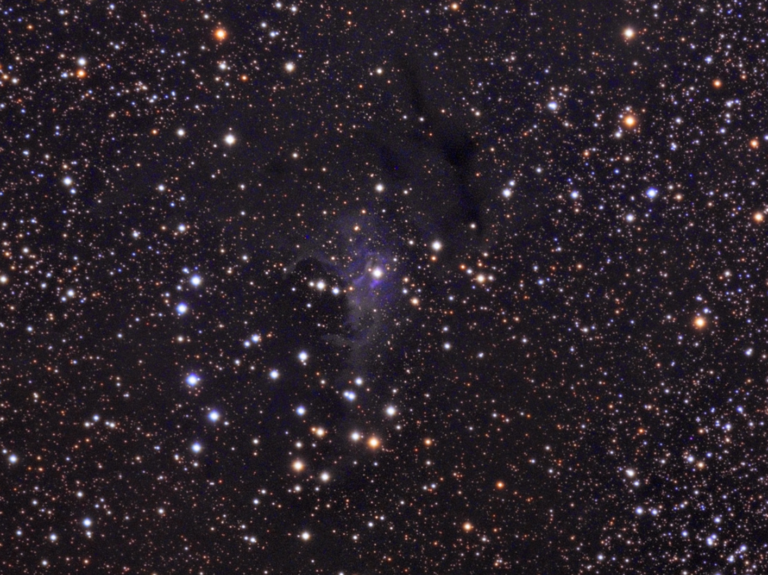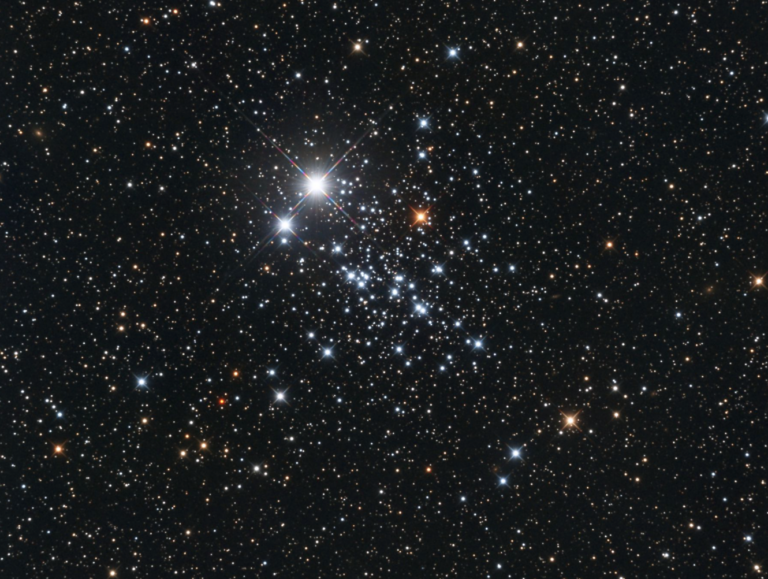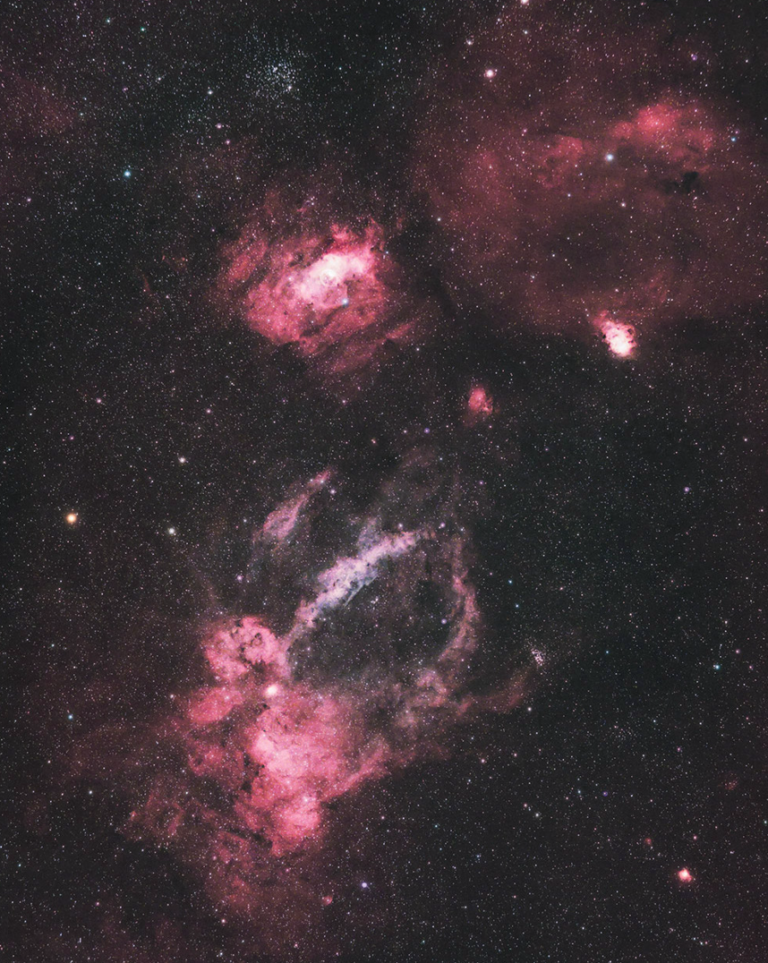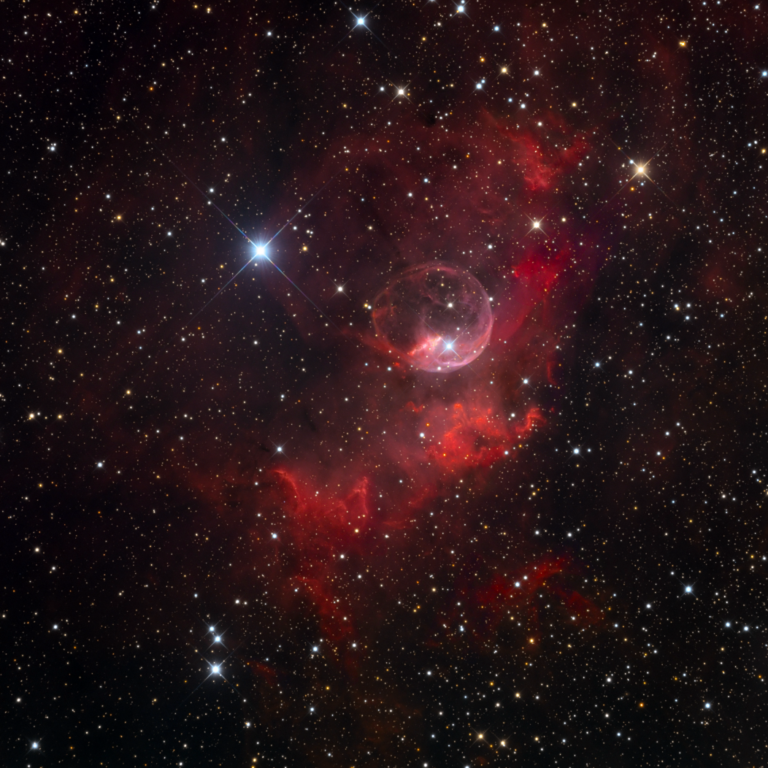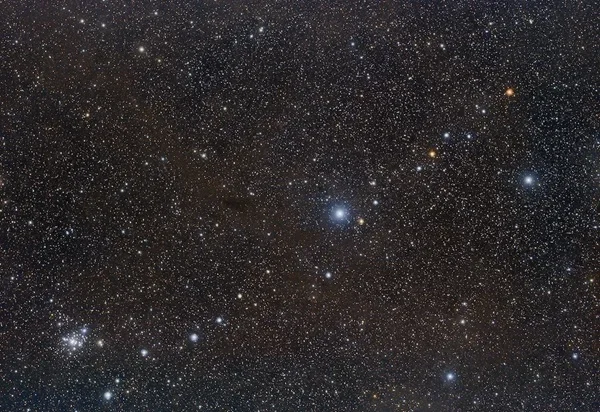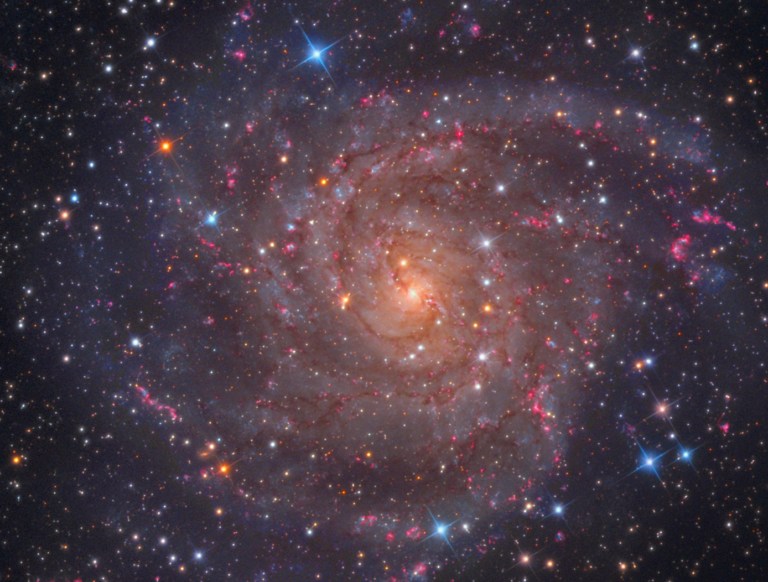NGC 7000 looks as big as a continent — the continent of North America, to be exact. This emission nebula lies near Deneb in the tail of Cygnus. It is 2° by 1 2/3° across, or 10 times the area of the Full Moon. William Herschel discovered it, but it was cataloged by his son, John. They both saw the shape as indistinct, combined with abundant stars in the Milky Way. German astronomer Max Wolf photographed the area in 1890 and named it the North America Nebula. NGC 7000 is part of a larger complex — Sharpless 2–117 — that includes the Pelican Nebula (IC 5070) and the swath of dark dust that separates the two, named L935 by Beverly Lynds in 1962.
Edwin Hubble proposed that the hot, luminous star Deneb was responsible for ionizing the North America Nebula’s gas, making it glow. However, at a mere 14,840 degrees Fahrenheit (8,230 degrees Celsius), Deneb is not hot enough. It’s also too far from the nebula. Instead, the nebula’s real energy source — the star J205551.3+435225 — is five times hotter than Deneb. It lies between the North America and Pelican nebulae, embedded within L935. That dark nebula dims the spectral type O3.5 star by 9.6 magnitudes; it would otherwise be one of the brightest stars in Cygnus.
For Northern Hemisphere observers, Cygnus lies in the bright patch of Milky Way visible in the late summer and autumn skies. Within that, the North America Nebula is bright enough that, in theory, it could be seen with the naked eye under perfect skies. With very good conditions, the right binoculars will show it as a large, amorphous glow 3° east of Deneb. In a 4- or 6-inch rich-field telescope with a wide-field eyepiece, the nebula fills the field of view. The Atlantic Coast and Florida are its most distinct features, thanks to their contrast with the adjacent dark nebula. Mexico is less conspicuous and the West Coast blends into the rich Milky Way star field. UHC filters really bring out the nebula, while reducing the glare from the foreground stars.
Make sure to explore Astronomy’s full list of 101 cosmic objects you must see. New entries will be added each week throughout 2022.
To get the latest astronomical news and observing content delivered directly to your door, subscribe to Astronomy magazine today!

